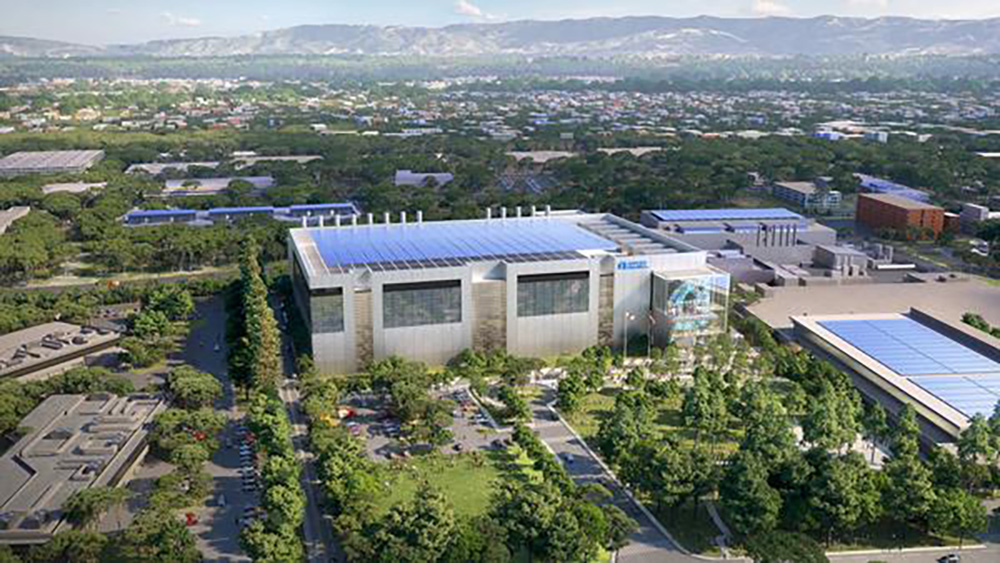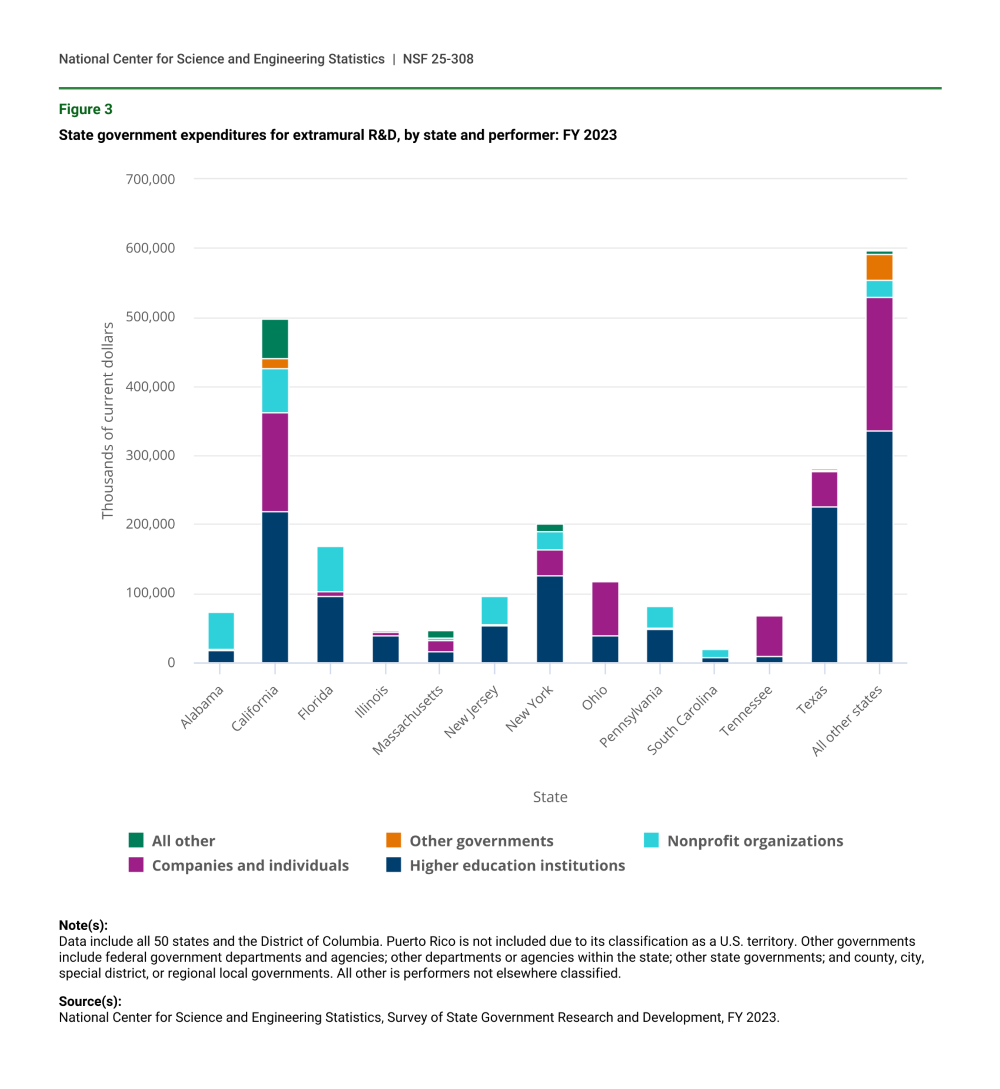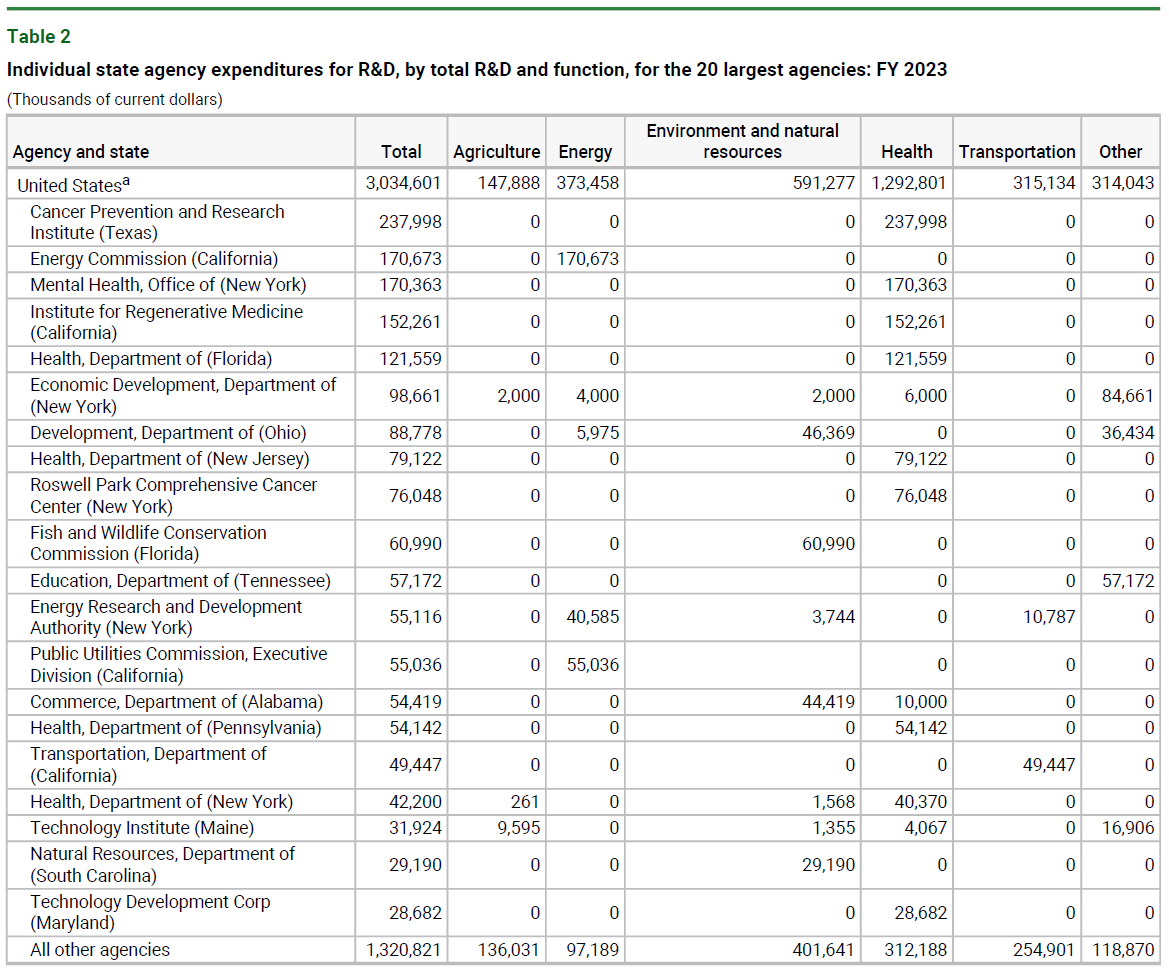

Given California’s R&D prowess, it was no surprise that early this month the city of Sunnyvale (home to Applied Materials’ forthcoming Equipment and Process Innovation and Commercialization Center, pictured) was announced as the expected location for the CHIPS for America Design and Collaboration Facility.
Rendering courtesy of Applied Materials
It’s that time of year.
Not the time of frantic travel planning, Thanksgiving family drama, early sundowns and surprise snowstorms. No, it’s time to be thankful for a flurry of new data on R&D expenditures from the National Science Foundation and its National Center for Science and Engineering Statistics (NCSES).
Driven by the Annual Business Survey developed by the NCSES and the U.S. Census Bureau and by the Survey of State Government Research and Development, the various reports issued over the past week shed light on hot spots in R&D by state, by big industry and by the smallest companies of all.
The States
The freshest data come from the state government survey, which covers FY 2023.
State government agencies’ expenditures on research and experimental development (R&D) totaled $3 billion, an increase of 14.3% from FY 2022 and the largest increase since FY 2015, said the NSF. “Of the six functional categories of state agency R&D expenditures, health-related R&D remained the largest with over $1.3 billion in expenditures, increasing 17.6% from FY 2022,” the agency reported, followed by $591 million spent on environment and natural resources-related R&D, $373 million on energy, $315 million on transportation and $148 million on agriculture.
“Although state governments are both funders and performers of R&D, the majority (76%) of their expenditures support extramural R&D (i.e., performers other than state agencies),” said the NSF. “Higher education institutions were the primary recipients of these expenditures, receiving 54% of all extramural funding, followed by companies and individuals (26%), and nonprofit organizations (14%).”

All graphs and tables courtesy of NSF
As the color coding in the above graph illustrates, companies and individuals in California, Ohio, Tennessee, New York, Massachusetts and Texas received healthy proportions of overall funding. But practice varies by state: “Texas state agencies directed $225 million of the state’s total extramural R&D of $280 million toward higher education institutions, compared with $53 million to companies and individuals,” the NSF stated. “By comparison, California’s extramural R&D funding is distributed across three sectors, with $218 million directed toward higher education institutions, $143 million toward companies and individuals, and $64 million toward nonprofit organizations.”
Below are the 10 states with the largest amount of extramural R&D expenditures. Combined, they accounted for $1.6 billion or 71% of all extramural R&D:
| 1. California 2. Texas 3. New York 4. Florida 5. Ohio 6. Pennsylvania 7. New Jersey 8. Alabama 9. Tennessee 10. Massachusetts | $497 million $280 million $200 million $169 million $117 million $83 million $96 million $75 million $67 million $47 million | |
Three of the 20 largest state agencies by total R&D are not focused on science, health or other scientific endeavors, but on economic development. No. 6 on the list is the New York Department of Economic Development, with total R&D funding of more than $98.6 million. No. 7 is the Ohio Department of Development (more than $88.7 million), while the Alabama Department of Commerce comes in at No. 14 with $54.4 million in R&D funding.
National Center for Science and Engineering Statistics | NSF 25-308

a U.S. total reflects all 50 states and the District of Columbia. Puerto Rico is not included due to its classification as a U.S. territory.
Note(s):
Includes state agency funding from all sources for both intramural and extramural performance. Detail may not add to total because of rounding.
Source(s):
National Center for Science and Engineering Statistics, Survey of State Government Research and Development, FY 2023.
Both Ohio and Alabama devote much of their economic development R&D funding to areas in the category of environment and natural resources, while 86% of New York’s economic development R&D (more than $84.6 million) falls under “other.”
The Feds
The newest federal R&D data is from FY 2022, when federal government facilities performed $34.5 billion of R&D, writes NCSES Survey Manager Ronda Britt (sister of Site Selection EVP Ron Starner). The data collected via a survey at the federal facility level represent the first ever direct measurement of the actual performance of R&D within federal facilities, as opposed to previous measurements of funding obligations, which could be meted out over several years.

A total of $20.9 billion of the overall federal R&D expenditure (61%) was performed within Department of Defense (DOD) facilities. Just over half (51%, or $17.6 billion) of the R&D performed within federal facilities was within the field of engineering, encompassing “a wide array of work in subfields such as aerospace, biomedical, chemical, civil, environmental, electrical, computer, industrial, systems, mechanical, materials and geological engineering,” the NSF reports. “The next-largest field was biological, biomedical, and health sciences (19%, or $6.7 billion).”
The Small Businesses
Another first was realized in the new NSF InfoBrief on R&D by microbusinesses, defined as companies with one to nine domestic employees, which employ over 36,000 domestic R&D staff. “In 2022, microbusinesses reported a total of $7.6 billion in R&D costs, of which 88%, or $6.7 billion, was domestic and 75%, or $5.7 billion, was performed by the microbusinesses themselves,” the NSF states, with the remainder payments to others for R&D, including purchased R&D.
Of the $6.7 billion in domestic R&D costs, 55% was for salaries, wages, and fringe benefits. For manufacturing businesses, 39% of domestic R&D costs was spent on salaries, wages, and fringe benefits, while the percentages for the information and for the computer systems design and related services sectors were 80% and 79%, respectively.
Notably for those companies for whom tax incentives related to machinery and equipment or property are meaningful, nearly half (46%) of the capital expenditures by microbusinesses for R&D operations was for machinery and equipment, 12% was for capitalized software, 11% was for intellectual property, 3% was for buildings and land improvement, and less than 1% was for land acquisition,” the report states.
Almost 39% of all domestic R&D costs “was from scientific research and development services (NAICS 5417),” the report says. “Computer systems design and related services (NAICS 5415) accounts for 25% of all microbusiness domestic R&D performance costs. Among the manufacturing industries (12% of all microbusiness domestic R&D performance costs), chemicals (NAICS 325) and computer and electronic products (NAICS 334) each made up 3% of the total domestic R&D performed by microbusinesses.”
Three-quarters (77%) of microbusiness R&D performance was paid for from the companies’ own funds. The five states of California, Massachusetts, Pennsylvania, Texas and New York accounted for 54% of all domestic microbusiness R&D performance cost. California is among the states that offer an R&D tax credit.
Asked whether the location refers to the headquarters of a microbusiness or to where the R&D was actually performed, Amber Levanon Seligson, who leads the NSF NCSES survey management team, explains that in the Annual Business Survey (ABS), it refers to where the R&D was performed. And for anyone who’s ever known someone whose company launched in a basement or garage, it makes sense that the two might be co-located.
“The R&D measured in ABS is for businesses with 1-9 employees, which are mostly single units, meaning they operate in one location,” she writes. “For single-unit companies, the headquarters and location of R&D performance are typically the same location.” — Adam Bruns